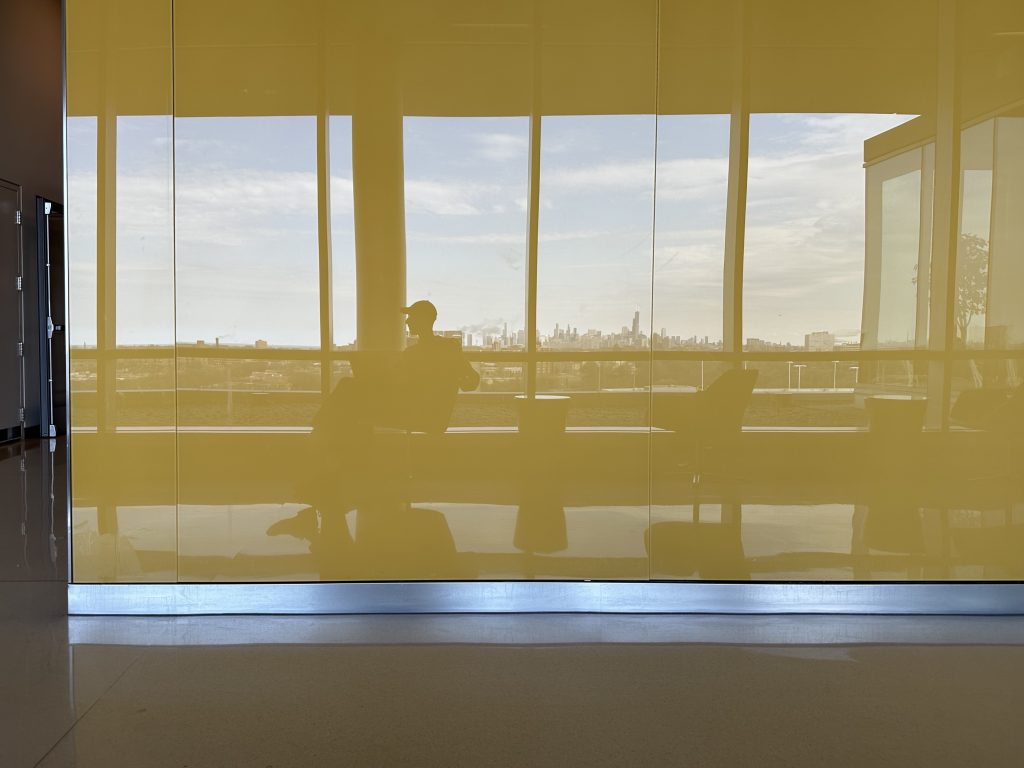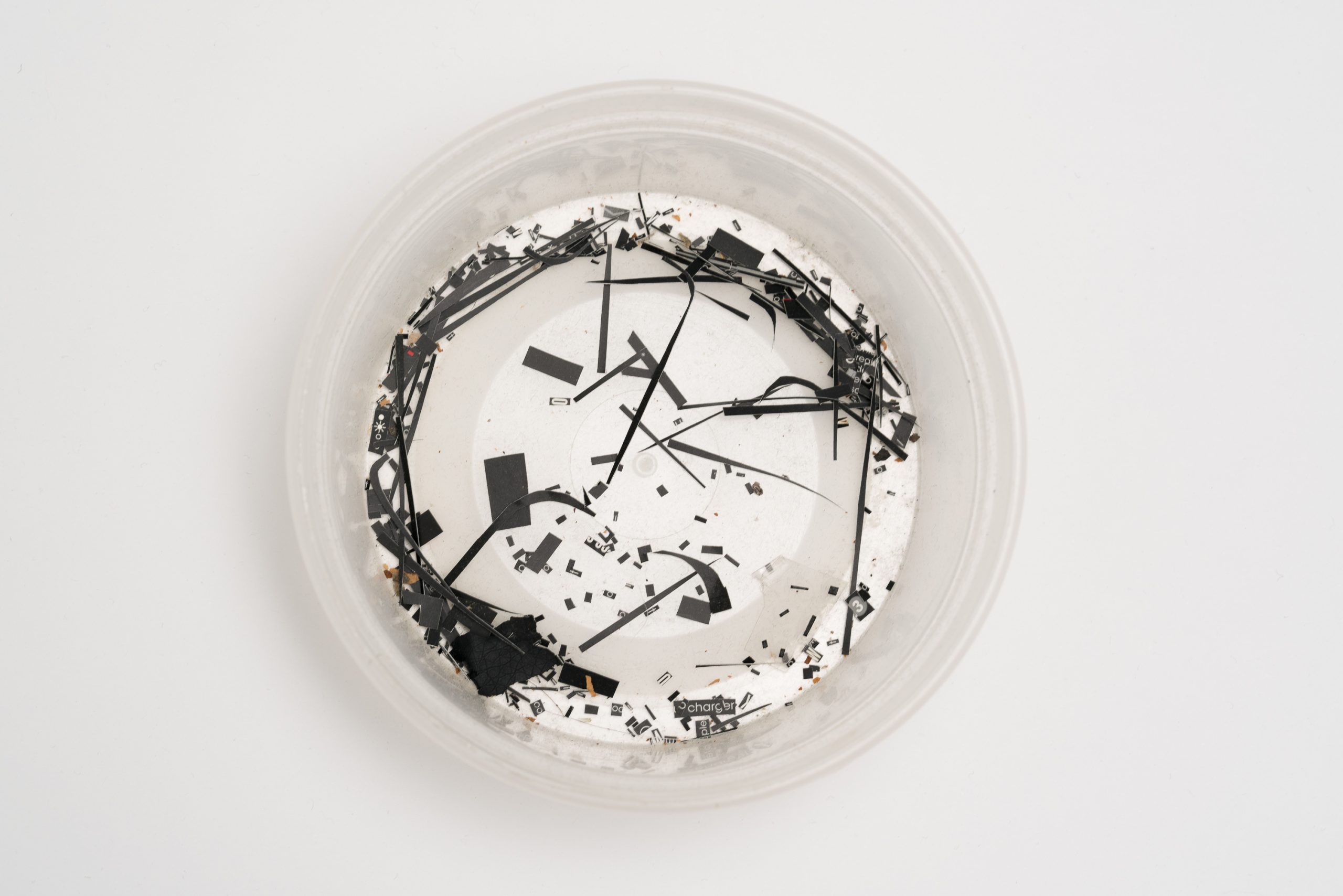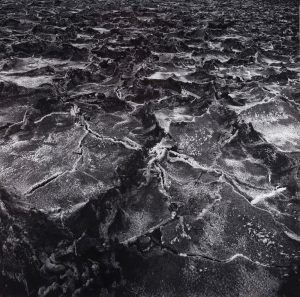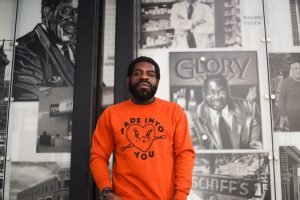The tie between us is very fine, but a Hair never dissolves
Emily Dickenson, 1885
Gregory Bae (1986-2021), was an artist, community organizer, brother, best friend, educator etc. Like so many artists in Chicago, Greg wore innumerable hats, but unlike many of his peers, he somehow managed to fully commit himself in whatever role he found himself occupying at a given time. This is not an essay about Greg in particular, nor an exegesis looking to sum-up the conceptual framework of the objects he left behind. Rather, it’s a text about a polity, about Chicago, and about keeping the thought of someone you love alive without sacrificing yourself in the process.
Greg was one of those artists who was as close to being as universally respected within Chicago’s artistic milieu as one can be, but he wasn’t one of those artists whose name and work felt oppressively inescapable. Part of this can be boiled down to a certain cantankerous impulse in his work. Objects were never quite finished and constantly being reworked, reinterrogated, restructured, and repaired. The other part can be attributed to the very nature of living and working as an artist in Chicago itself. Perhaps expressing it best 1953, Nelson Algren wrote “Yet on nights when, under all the arc-lamps, the little men of the rain come running, you’ll know at last that, long long ago, something went wrong between St. Columbanus and North Troy Street. And Chicago divided your heart. / Leaving you loving the joint for keeps. / Yet knowing it never can love you.”1
After all the packinghouses, shady gin joints, and cramped kitchenette apartments have all been exchanged for exposed brick offices, boutique cocktail bars, and luxury condominiums, what remains of Algren’s Chicago is the chip on the shoulder: the feeling that Chicago is a place where an artist is resigned to a certain degree of superfluidity at home and beyond. Making work in a city where flying under the radar remains the du jour state of being can be a blessing and a curse. On the one hand, it makes working a helluva lot easier, but on the other it’s hard to know what to do with it afterwards. How a given artist feels about this particular dilemma seems to be a question that has defined the Windy City for at least the last thirty years: What do you want more, a practice or a career?
Whether Chicago loved Greg, the way Greg loved Chicago depends, I suppose, on what Chicago we speak of. If by Chicago we mean a municipality operating on behalf and in interest of the laws of the United States of America and State of Illinois, then no, this Chicago hates everyone. If by Chicago, we euphemistically mean a series of institutions and commercial galleries whose attunement to financial incentives can influence when, where, and why certain work is visible at certain times, then we can say Chicago was intrigued, but ultimately ambivalent. If, however, by Chicago we mean to speak of artists who toil in dead-end gigs, studios, and classrooms in front of hordes of dead-eyed undergraduates, people, who in spite of unrelenting thanklessness continue to ferret out time and space to make, think, and celebrate art – then yes, Chicago loved Greg.
Despite Greg’s formidable place in the eyes of his peers, it was easy to eye a sudden posthumously planned exhibition at the Museum of Contemporary Art, with a degree of skepticism. But instead of pandering to Chicago’s artistic grassroots or reinforcing the pernicious trope of the underappreciated-genius-gone-too-soon, the MCA show was a considered and sensitive tribute to a practice long overlooked by institutional eyes. Perhaps owing to curator Nolan Jimbo never having met Greg during his lifetime, the MCA show dispelled the suspicion that surrounded it while presenting a touching first-crack at what I hope will be the first of many public cases for Greg’s relevance – I’m still mad about the inclusion of safety bars on the treadmill piece, but museum’s all have their rules.
This is Chicago we are talking about, so it should not be particularly surprising that none of the necessary requirements for efficient market-historical metabolization occurred. No commercial gallery swooped in for representation of the estate; no exhibitions in New York, LA, or Europe materialized; no obituaries were to be found sandwiched between ads for Gucci and Gagosian in glossy magazines; not even an ember of interest on what was then a white-hot secondary market. In fact, the press was eerily quiet, even by Chicago’s milquetoast standards. NewCity composed a rehash of the show and a verbally threadbare “Critic’s Pick” can be found buried on ArtForum’s website. After the exhibition’s closure at the MCA, it felt as if the work just sort of disappeared, back to the studio for another round of repairs, edits, and satisfying tweaks. But it didn’t go back to the studio nor did it go anywhere that was going to financialize Greg’s practice into the history books or popular consciousness. Instead, it ended up at Bill’s Auto.
Occupying the site of the eponymous auto body shop, Bill’s Auto sits on the stretch of South Archer Ave that runs parallel to the Stevenson Expressway in McKinley Park. For some time now, it has been home to Tony Lewis’s studio. In 2018, the garage began to host exhibitions organized by Greg in what was formerly the shop’s lobby. Today, Bill’s Auto remains Lewis’s studio, albeit with slightly less square footage, owing to the small mountain range of boxes containing the contents of what is to become the official archive of Greg’s estate.
Having gone nearly four years without hosting an exhibition, Bill’s Auto recently reopened to the public with CV: part-exhibition series, part-open-ended performance documenting and researching the contents of the life and practice Greg left behind. Conceived by Lewis, Greg’s brother Boscoe Bae, and the documentary duo BOB (Robert Chase Heishman and Robert Salazar), CV looks to upend the ways in which archives and the legacies they suppose to steward can be developed, interpreted, and eventually reintroduced to the public. It is a fairly straightforward proposition, a small selection of Greg’s work is on view in the front lobby of Bill’s Auto, and inside of Lewis’s studio, contents of a specific box are spread out on a table for viewing and subject to live documentation by Heishman and Salazar. Through the live performance of archival procedure, pretense, and propriety, CV frees up space for novel methodologies in archival practices. Lab coats, nitrile gloves, pristine photographic backdrops, studio lights and bottles of duster are employed before a crowd that is either watching, participating, or half-ignoring the sacramental handling of objects pulled from boxes and laid out nearby. Whether it is a work of art, detritus or something between the two yet to be determined each is handled like its own eucharist, before being placed in front of the camera, where audience collaborators are free to suggest how to document each piece or offer their own stories and memories behind the work – if they have any.
At the root of the archive is the Greek arkhē, meaning origin, or command. Archive was originally a word first used to describe the home of a magistrate who kept written records, but at its core, philosopher Jacques Derrida identifies two imperatives essential to the archive: commencement, and commandment. In this light, the archive can be thought of in the sense of it’s absolute authentic authoritativeness, it is the first word, and there ought to be no other word outside of its contents – Il n’y a pas de hors-texte and all that jazz – so it may as well be the final word too.
This tautological structuring lends itself well to the way in which an archival context seems to thrive on the occlusion and suspension of temporal norms and porosity in favor of a (seemingly) self-articulated closed system. The problem with talking to oneself too much though is that madness is never far behind. The siren song of the archival fetish, is that each object circles back to the authoritativeness of an author. In the case of an archive’s atemporal world set apart from our own, this author might as well be a god, whose present-absence reifies their singular position within history, leaving interpreters without recourse to a trial over meaning and intent.
Instead, CV is an archive directed largely by intimation; shared stories, disjecta, and undeleted email correspondences as well as the products of Greg’s labor and personal life. Rather than focusing on singular narratives to attach to certain objects, the roundtable discussion at the end of the opening night – which will continue to be a primary feature of future iterations – allowed for conflicting and contentious stories and opinions on how to move forward take center stage. In a room full of friends who shared memories of Greg in graduate school, innumerable evenings passed in dive bars, or days in Hyde Park; I find myself feeling a bit like an interloper despite the three years I was privileged to call Greg a friend. CV isn’t a contest though, and I found that in discussion, my own thoughts and feelings about Greg’s practice were taken seriously enough at times to be met with comment and debate.
In one instance James Kao, co-founder of Hyde Park’s 4th Ward Project Space (which had done a solo-exhibition with Greg in 2018) posed a thoughtful rebuttal against my inclination that a kind of romantic failure is at the heart of Greg’s work. Rather, recalling time spent working on the aforementioned exhibition, Kao teased out something more salient. Rather than an impulse towards collapse, Kao identified Greg’s urge to endlessly toy away at something to achieve an ever elusive ideal in his head. It was an acute counter to a position that was central to my relationship with Greg’s work. Kao’s recollection contributed a record of his own memory into CV’s archive along with a critical observation that has since supplemented my own reception of work that I had, in hindsight, immaturely overdetermined.
In some ways, the loss of a loved one can make us protective of our distinct memories and sense of that person, but nothing about the conversations around Greg’s work or what to do with it going forward came close to being possessive or myopic. Rather, in disagreement we can find new contours, contradictions, and things heretofore unthought still alive and well in Greg’s practice. While the topic of the evening may have been more suited to an academic conference, the atmosphere felt more like a town hall or a collective bound by some shared interest in a common finitude.
In Greek tragedy, the chorus is tasked with delivering the moral judgment of History upon the protagonist; they interpret the play’s event’s from an omnipotent perspective and issue judgment accordingly. CV, is not a project in singular narrative structure traced through the life of one Greg, but rather it is a tangential and polysemic project that is more apt at tracing the contours of a singular person through a collective register. The choral composition that CV invites may hint at a solution for the one question all archives seem constitutionally allergic to: how do we as simultaneous inheritors and stewards navigate all this shit now that the person who made it is gone?
By virtue of etymology, archives admit themselves to be the first word on a given matter. I, however, don’t care to think that this ought to grant them additional permission to be the de facto final word as well. Rather, in a funerary mode, one might consider the eulogy as an appropriate means of address for a fluid archive. Coming from the eu (good) and logia (speech), the eulogy is an address delivered to speak in honor of someone at a commemorative event. Whereas a typical archive of course aims to highlight a specific individual, entity, or time and place, it tends to do so through a narrative mode that cuts a separation between the viewer and archived object. A eulogistic archive on the other hand would be aimed directly at that gap between the two. CV, is not so much a project in historicization as it is the Chorus performing a Eulogy – a final, yet continuous “good word” extended across time, through objects, and carried onwards by memory.
CV’s spirit feels little different than the artist-run joints Greg found himself perennially engaging with: there is no endowment, no board of trustees, nor any real plan for that matter either. The project will fly by the seat of its pants the same way any other of Chicago’s myriad project spaces do, engaging in a timeline structured by contingency, haphazard availability, and predictable rogues gallery of friends and strangers; whose continued presence and conversational input are what sustain a space in lieu of financial motivators. Herein lies my favorite part, CV is a project whose timeline goes hand-in-hand with the process of grief. In this instance, the archive is not a lacunae that misidentifies itself with the object of its mourning, but is instead a project in collective healing and learning. It’s all a bit saccharine, but in the same way Jonathan Richman reminds us bakeries are necessary for an erstwhile lack of sweetness in our lives.
Of course what I am saying could be all wrong and I’m overhyping the differences between CV and any other archive. Under a more critical gaze, it doesn’t look all too unreasonable to admit that every archive requires a degree of apocrypha and mythmaking to constitute what could otherwise often be a semiotically anemic environment. What CV does differently is it constitutively disinvests from a foreclosure of the world anterior to the archive. Rather than concern itself solely with the interpolation of the contents within its purview, it allows both the fruit of Greg’s practice as well as the flotsam and jetsam of daily life to be animated in their relation to one another for the sake of a future outside themselves.
I’ll end things with a brief anecdote I shared during CV’s inaugural convening: I remember a curator once overheard I was planning something with Greg, they were quick to tell me “He’s a very interesting artist, but look out, his stuff is always breaking.” I remember feeling smarter than I probably sounded when I replied by saying “Well that’s kind of the best part”. In my eyes Greg’s practice was locked in an obstinate battle against the inevitable. The collapse of this struggle – as demonstrated within certain individual works – can be performed gracefully, as if, at heart, they always held the tacit acceptance of their obsolescence. It is this kernel of doubt that fueled Greg’s commitment to the impossible.
Greg’s work was and remains finicky, ill-tempered, and at times ill-wired. Bits fall off, motors stall, certain materials aren’t archivally stable and hanging orientations can be highly ambiguous. His work is recalcitrant towards standard museological conservation, which spells trouble for any neat solution as to how the work can or even should be shown in the future. As artists Nate Young and Mika Horibuchi both pointed out during the open discussion, any kind of authentic decree as to how to show and care for the work is no longer accessible – so what should be done?
The timescale of art is always the timescale of an assumed eternity, even if that eternity just happens to find equivalency with the life of a battery shoved into the undercarriage of an RC car, or a futzy motor housed in a taxidermy rooster. Eventually – sooner than we’d like to believe – there will come a time when there is no one left who knew Greg firsthand. Any kind of primary source will be what is left behind by the participants of CV for as long as it continues. Likewise, future generations will learn about Greg’s practice based on the decisions made within Bill’s Auto. There is a responsibility within CV not just to Greg, but to those who are yet to know him. The way in which CV handles his work will determine much of these yet-to-be relations, but my hope is that they might transport them to a moment where the work still feels alive. Of archives, Susan Howe writes:
“Things-in themselves and things-as-they-are-for-us.
Often by chance, via out-of-the-way card catalogs, or through previous web surfing, a particular “deep” text, or a simple object (bobbin, sampler, scrap of lace) reveals itself here at the surface of the visible, by mystic documentary telepathy. Quickly – precisely – coming as it does from the opposite direction.
If you are lucky you may experience a moment before”
June 19, 2021. The last time I saw Greg.
We had planned to hang out in the Chicago Cultural Center to catch up over coffee and of course, talk about art. We shared a few hours ambling up and down the stairs, zigzagging through the halls of what once was the main branch of the Chicago Public Library. We meandered in and out of Buddy, where Greg was wrapping up a small group exhibition he had organized in the store’s corner. I remember it included the best Thomas Kong work I’ve seen: a coat hanger with the expected foodstuffs packaging adhered to it in a way that gave the impression of a moth or butterfly. Greg gave a deep-dive into each artist’s practice that would put most endowed curators to shame. Periodically, he would step away to check in on musician Kiku Hibono’s sound-check for a performance that he had organized for that afternoon. In hindsight it was obvious that while we had planned to hang out and catch up that morning, Greg knew he had numerous other things to attend to. I watched as he fulfilled these commitments all while staying near and listening to whatever bullshit I was on that day. Reflecting on Greg’s seemingly ceaseless patience, I am beginning to realize he was never fighting against time, he was making it.
- Nelson Algren et al., Chicago: City on the Make (Chicago: The University of Chicago Press, 2011). ↩︎
The first iteration of CV was exhibited on Friday, February 2, 2024 from 6-10 pm at Bill’s Auto in Chicago.

About the Author: Gareth T. Kaye is an exhibition maker, educator and art critic. He is the former co-founded and co-director of Apparatus Projects and now publishes Chicago Spleen, a criticism column on substack.



